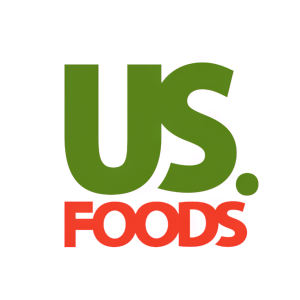Welcome to our dedicated page for Us Foods Hldg SEC filings (Ticker: USFD), a comprehensive resource for investors and traders seeking official regulatory documents including 10-K annual reports, 10-Q quarterly earnings, 8-K material events, and insider trading forms.
Rising food inflation, fuel surcharges, and perishable inventory write-downs make US Foods’ SEC disclosures a dense read. If you have ever searched “US Foods SEC filings explained simply” after opening the 300-page report, you know how complex margin drivers and case-volume metrics can be. Stock Titan’s AI eliminates that roadblock by converting technical language into clear insights.
Our platform links each filing type to what matters for a broad-line distributor:
- The US Foods annual report 10-K simplified pinpoints freight expense sensitivity, supplier rebates, and CHEF'STORE performance.
- The latest US Foods quarterly earnings report 10-Q filing tracks real-time food-cost inflation and gross profit per case in minutes.
- US Foods 8-K material events explained shows warehouse acquisitions and leadership changes as they happen.
- US Foods insider trading Form 4 transactions and US Foods Form 4 insider transactions real-time reveal when executives buy stock after cost-saving initiatives.
- The US Foods proxy statement executive compensation section clarifies how incentive pay ties to case-growth and free cash flow.
Every document arrives the second it hits EDGAR, complete with AI-powered summaries, side-by-side comparisons, and red-flag alerts. Use the dashboard for US Foods earnings report filing analysis, monitor US Foods executive stock transactions Form 4, or simply enjoy understanding US Foods SEC documents with AI instead of wading through footnotes. All filings, all forms, zero guesswork—so you can focus on pricing trends, segment margins, and competitive positioning, not page counts.
US Foods Holding Corp. reported that one of its executives beneficially owns 100 shares of its common stock, held directly, as of an event dated December 8, 2025.
The reporting person serves as Executive Vice President, Chief Legal Officer and Corporate Secretary and submitted this as an individual insider ownership report.
US Foods Holding Corp. reported an insider share purchase by a senior officer. On 12/01/2025, the reporting person acquired 46 shares of common stock at a price of $65.89 per share through the company’s Amended and Restated Employee Stock Purchase Plan. Following this transaction, the officer beneficially owns 4,536 shares of US Foods common stock, held directly.
US Foods Holding Corp. (USFD) announced that it and Performance Food Group Company have mutually agreed to end their previously announced information sharing process and will no longer pursue a potential combination. In the same update, US Foods said it is reaffirming its fiscal year 2025 guidance and its 2025–2027 long-range plan growth algorithm that were outlined on its third quarter earnings call.
The company also disclosed its intent to enter into an accelerated share repurchase agreement for an aggregate of $250 million of common stock under its existing repurchase authorization. In addition, the Board of Directors has approved a new $1 billion share repurchase program, signaling a substantial commitment to returning capital through stock buybacks.
Capital World Investors filed a Schedule 13G reporting beneficial ownership of 11,695,346 shares of US Foods Holding Corp. (USFD) common stock, equal to 5.2% of the class. The filing lists sole voting and sole dispositive power over the same 11,695,346 shares.
The percentage is based on 225,171,616 shares believed to be outstanding. The date of event is 09/30/2025. The reporting person is classified as IA (investment adviser), and the certification states the securities were acquired and are held in the ordinary course of business and not for the purpose of changing or influencing control.
US Foods (USFD): A company officer reported multiple equity transactions on 11/11/2025. The officer exercised employee stock options at $23.18 and $30.39 (codes M), with share withholding to cover taxes (code F). The filing also reports an open‑market sale of 58,632 common shares at a weighted average $72.00, with trades ranging from $71.6335 to $72.4725 (code S), and a gift of 2,782 shares (code G). Following these transactions, the officer directly beneficially owned 110,628 shares. The reporting person is the Chief Transformation Officer & EVP, Nationally Managed Business.
US Foods Holding Corp. (USFD): Schedule 13G ownership disclosure. Wellington Management Group LLP, together with affiliated entities, reported beneficial ownership of 12,875,970 shares of US Foods common stock, representing 5.72% of the class as of the report date. The filing lists 0 shares with sole voting and dispositive power, and 11,611,696 shares with shared voting power, with 12,875,970 shares under shared dispositive power.
The securities are held for clients of Wellington’s investment adviser affiliates, and the certification states they were acquired and are held in the ordinary course of business and not for the purpose or effect of changing or influencing control. The reported event date is 09/30/2025.
US Foods (USFD) received a Form 144 notice covering the proposed sale of up to 58,632 common shares. The filing lists an aggregate market value of $4,263,958.92, with an approximate sale date of 11/11/2025 through Fidelity Brokerage Services LLC on the NYSE. Shares outstanding were 222,941,412.
The shares reflect prior equity awards and planned option exercises. The seller reports stock acquired via restricted stock vesting on 03/27/2024 (4,749 shares), 03/28/2024 (3,606), and 03/29/2024 (12,017), and option-related amounts dated 11/11/2025 of 26,514 and 11,746 shares. A Form 144 is a notice of intent and does not guarantee that sales will occur in full.
US Foods Holding Corp. reported higher quarterly results. For the 13 weeks ended September 27, 2025, net sales rose to $10,191 million from $9,728 million and diluted EPS increased to $0.67 from $0.61, as total case volume grew 1.1% with strength in independent restaurants (+3.9%).
Gross profit increased to $1,753 million despite a higher LIFO expense of $46 million; operating income was $282 million. Adjusted EBITDA improved to $505 million from $455 million, reflecting better cost of goods and distribution productivity. Year-to-date, net income reached $492 million and cash from operations was $1,076 million, supporting ongoing investments and capital returns.
The company repurchased approximately 4.1 million shares for about $335 million in the quarter; year-to-date repurchases were 7.6 million shares for about $608 million. As of October 31, 2025, 222,941,412 common shares were outstanding. Total debt was $4,952 million, and cash was $56 million at quarter end. The new buyback program had about $467 million remaining authorization.


